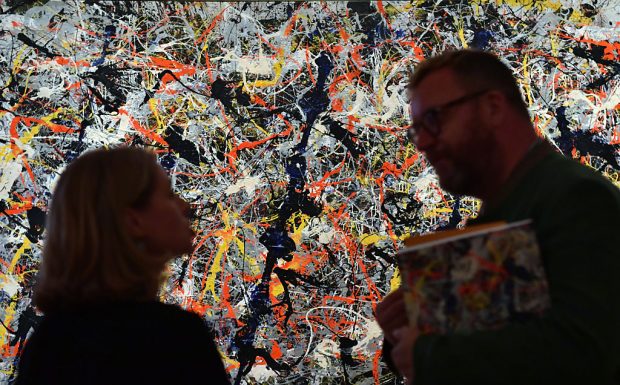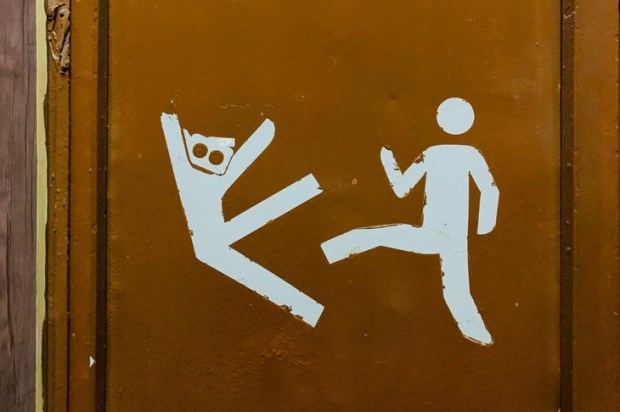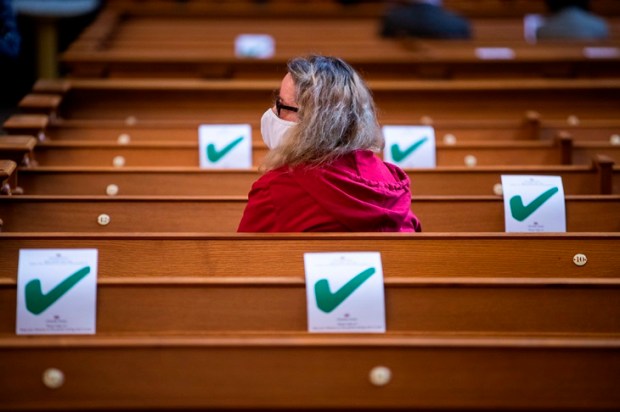 Jackson Pollock’s Blue Poles must be sold. Not because it’s a bad painting or because it fails the Australian test, but because it of what has come to represent to the Left.
Jackson Pollock’s Blue Poles must be sold. Not because it’s a bad painting or because it fails the Australian test, but because it of what has come to represent to the Left.
Last week, Senator James Paterson suggested that the painting, currently on loan to the Royal Academy of Arts in London, should be sold to the highest bidder in order to help with our national debt.
Given that the painting might fetch somewhere in the region of $350 million, its sale is unlikely to make much of dent in the country’s growing $470 billion gross national debt.
Senator Paterson justified his idea by saying that although it was a ‘great painting’, the nation could afford to lose it because it’s not Australian enough.
While the canvas is no doubt ‘great’ in terms of scale, Blue Poles is light years from away from being a great painting. Rather, it is an anarchic assemblage of dribbles, splatters and droplets which leaves the gallery visitor wondering just what it’s all about.
And if we were to apply the Senator’s logic about the painting’s foreign provenance to the entire collection of the National Gallery, then we would be left with very empty rooms indeed.
Blue Poles is the ultimate symbol of Gough Whitlam’s progressive and politically modernist government, which the Left continues to praise and defend in equal measure. What the canvas represents in reality is the financial, political and cultural ineptitude of the disastrous and irresponsible 2 years and 11 months of the Whitlam government.
The vast canvas has been gracing an equally vast wall of the National Gallery of Australia since 1973, when it was purchased for a whopping $1.3 million, which is about $11.5 million today.
James Mollison, the director’s gallery at the time, had to apply for a special dispensation from Whitlam because he was only allowed to spend $1 million on any one piece. Whitlam thus achieved the highly dubious world record of having bought the most expensive piece of contemporary American art work on sale anywhere at that time.
When it arrived in Australia, critics objected to both its appearance and its price. The outrage and scandal caused by Whitlam’s profligate decision was entirely justified.
Entitled either No. 11 or Number 11 (apparently naming the painting after an object such as ‘poles’ was too distracting), the work was criticised as having been painted by ‘barefoot drunks’. This was not merely hyperbole but based on the story of its creation told by Pollock’s close friend Tony Smith, who together with
Pollock, proceeded to get drunk, unroll a canvas on the floor, empty tins of paint onto it, get even more drunk, lie on it, then walk around on it in bare feet.
Aesthetic value aside, it was the financial implication of the purchase made in the early 1970s which was as unforgivable then, as it is now.
The painting was acquired by the government during a period of ‘stagflation’, in which the Oil Crisis, Britain’s entry into the EEC and rising competition for Australian exports, combined with Labor’s appalling economic policies, drove Australia into economic recession.
Australians were suffering from high unemployment on a scale unmatched since the Great Depression of the 1930s. They lost their jobs, business and savings. Inflation hit nearly twenty per cent, the highest since the post-war years. It was by no means a happy or prosperous time for many, nor was it a time to be spending $1.3 million on second-rate American paintings.
The Labor government’s coffers had become so depleted that there was simply not enough money to keep the country operating. Facing defeat in the 1975 election, it attempted to unconstitutionally borrow $500,000 from Iranians connected to Saddam Hussein’s regime to help pay for the campaign.
Blue Poles is a shambolic painting, purchased by a shambolic government. It represents Whitlam’s complete and utter failure as Prime Minister as well as the reckless spending of his government. It is precisely because it has become the Left’s monument to this failure, that it must go under the hammer as soon as possible.
Dr Bella d’Abrera is the Director of the Foundations of Western Civilisation Program at the Institute of Public Affairs
Got something to add? Join the discussion and comment below.
Get 10 issues for just $10
Subscribe to The Spectator Australia today for the next 10 magazine issues, plus full online access, for just $10.


























Comments
Don't miss out
Join the conversation with other Spectator Australia readers. Subscribe to leave a comment.
SUBSCRIBEAlready a subscriber? Log in